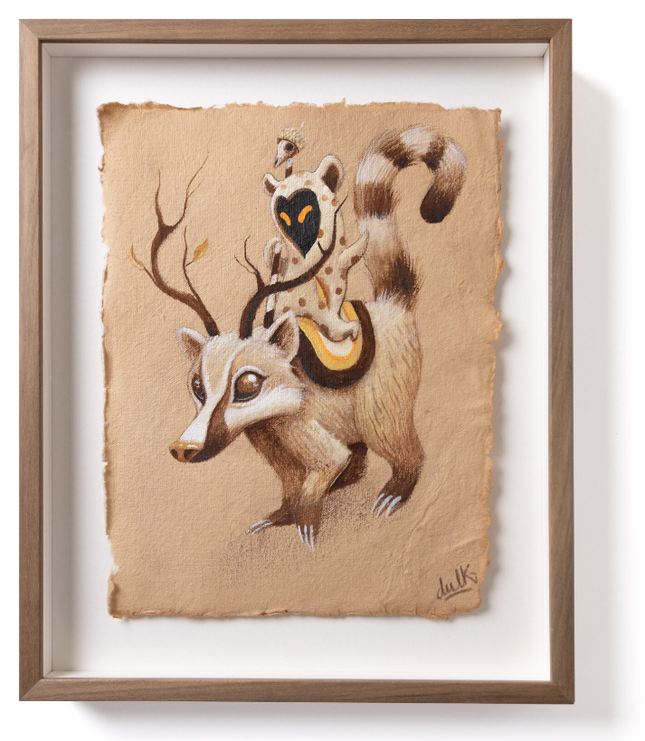
Religion

Dulk- Antonio Segura Donat Coati The Gang Original Acrylic Painting by Dulk- Antonio Segura Donat
Coati The Gang is an Original Acrylic Graphite Pencil Painting by Dulk—Antonio Segura Donat. It is one of a Kind of Artwork Framed on Japanese Handmade Fine Art Paper by a Street Art Pop Artist. 2023 Signed Pencil & Acrylic Paint Original Painting Artwork Custom Framed by Artist Size 9.84x12.2 Unframed 7.09x9.46 Dulk's Fusion of Naturalism and Fantasy: "Coati The Gang" In the piece "Coati The Gang," Dulk, the artistic alias of Antonio Segura Donat, transports us to a realm where wildlife and imagination intertwine. This original artwork, brought to life through acrylic and graphite pencil on Japanese handmade fine art paper, demonstrates Dulk's unique ability to fuse elements of street art pop with classical painting techniques. Artistic Craftsmanship of Dulk's Original Painting This one-of-a-kind painting, meticulously framed by the artist, measures 9.84x12.2 inches with a slightly smaller canvas size of 7.09x9.46 inches when unframed. The bespoke nature of the frame enhances the viewing experience, tailored to accentuate the intricate details and delicate paper choice. The selection of Japanese handmade fine art paper for "Coati The Gang" mainly tells of Dulk's dedication to quality and craftsmanship, providing a subtle texture that complements the detailed brushwork and graphite precision. Captivating Imagery by Antonio Segura Donat "Coati The Gang" is a testament to Dulk's storytelling through visuals, with its central figure, the coati, portrayed in stunning detail amidst a cast of enchanting characters. The artwork is steeped in the rich tradition of naturalist illustration yet is distinctly modern in its execution and style. Dulk's narrative merges the organic world with a touch of the surreal, inviting the viewer to delve into a story that unfolds with every gaze. The use of acrylic paint brings a vibrancy to the artwork, while the pencil's subtlety allows for fine gradations and texture that give depth and life to the creatures within. The meticulous brush strokes and careful shading underscore the thematic elements of street pop art and graffiti artwork, where the message is often conveyed through the potency of the image itself. The "Coati The Gang" original painting is more than a piece of artwork; it is a window into Dulk's imaginative world, where the boundaries of street pop art and fine art beautifully collide. It represents the artist's commitment to bringing the wonders of the natural world into the urban art dialogue, establishing Dulk as a vanguard in the space where pop culture and wildlife conservation meet.
$4,000.00


